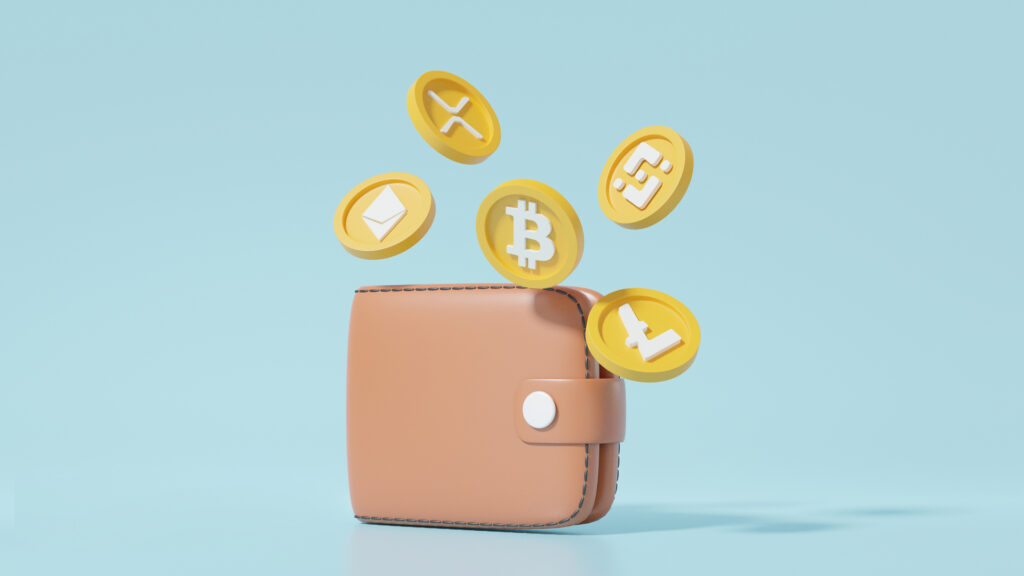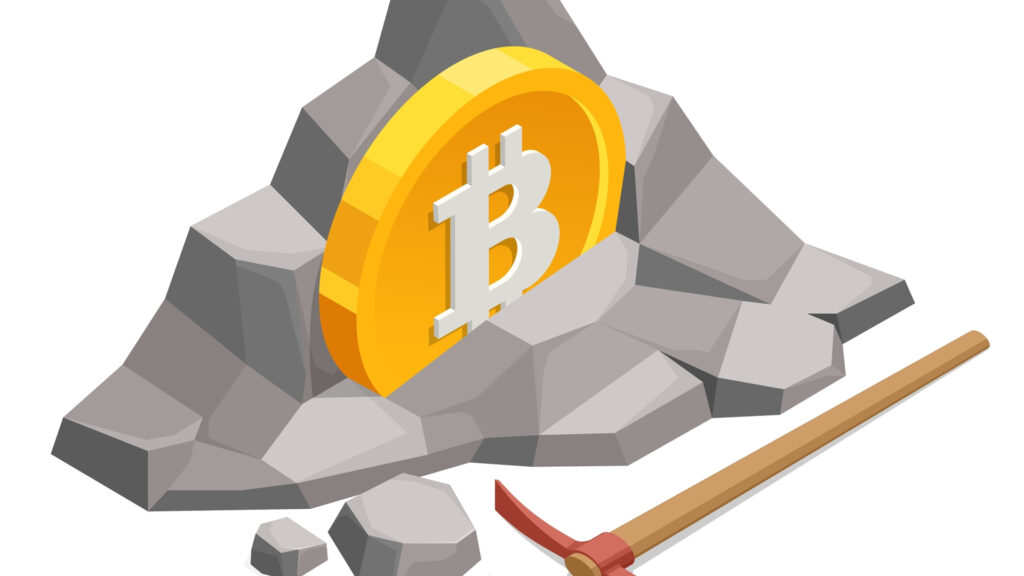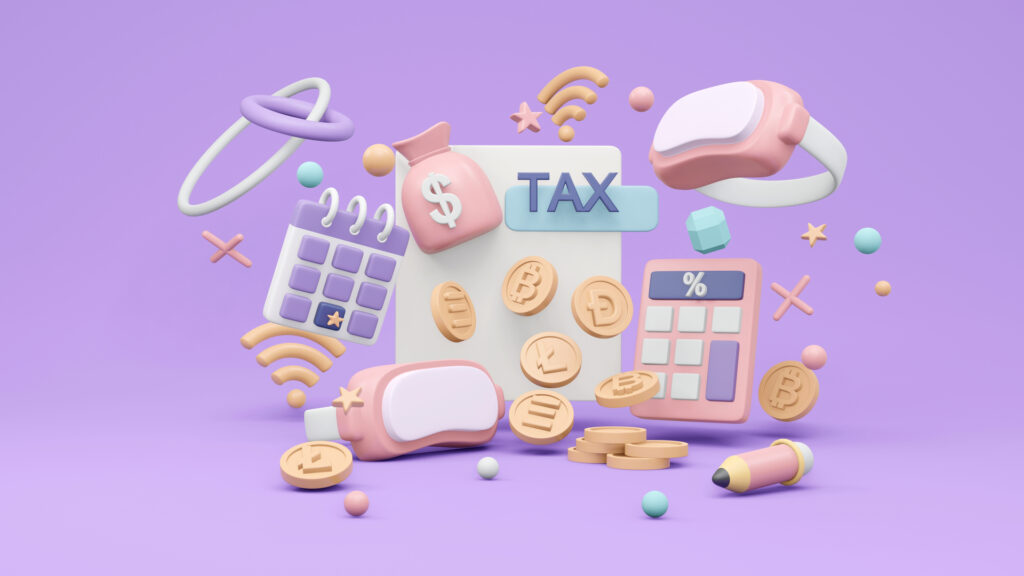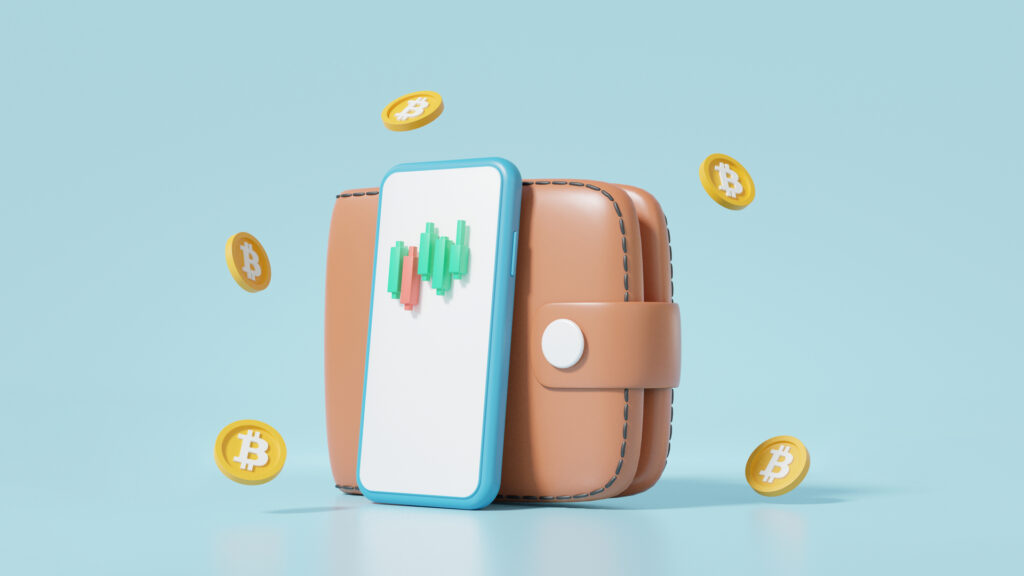According to the latest analyst reports, the global market for cryptocurrencies and related instruments will increase three times or even more by 2030. Nevertheless, many still do not know what cryptocurrencies are and how they work. So, we will tell you everything you need to know about them, from the operation mechanism to cryptocurrency regulation, in this article.
What is cryptocurrency?
Cryptocurrency is a digital or virtual currency. Cryptocurrency definition implies that this asset exists only on the Internet, that is, it cannot be printed and physically touched. Cryptocurrency is protected by a special technology called blockchain — a chain of blocks with a record of information protected from external interference. Decentralized cryptocurrency means that no one can control it. Copies of the transaction history are stored on computers called nodes, making the history impossible to fake or edit.
Decentralization defines the whole point of cryptocurrencies: they are not controlled by the government or any non-crypto companies. Therefore, it allows you to cheaply and quickly transfer funds to any person, invest, take loans at low interest, and so on. Still, it also becomes the reason for the volatility of the cryptocurrency rate: if the asset's value plummets, you will not be able to activate the tools to contain prices because they do not exist. The same goes for price prediction websites, which allow you to find out the price of an asset shortly for donations.
Who invented cryptocurrency?
People believe that the cryptocurrency was invented by Satoshi Nakamoto, who created bitcoin in 2007. In 2008, he talked about crypto in his article and document describing the principles of bitcoin operation and its decentralization. By the way, Satoshi Nakamoto is a pseudonym behind which one person or a group of crypto genies can hide. Currently, Satoshi owns one million BTC.
Some experts have speculated that the pseudonym might be Dorian Nakamoto, an American engineer named in 2014 as the creator of bitcoin in an article for Newsweek. They also thought it might be Hal Finney, the first person to accept a bitcoin transaction, or Craig Wright, an Australian scientist who claimed he was Satoshi. However, this did not help him seize some part of Nakamoto's fortune, which no one had ever seen by court action.
How does cryptocurrency work?
As we’ve mentioned before, cryptocurrency operates on the blockchain system. All transactions are recorded in blocks connected in a single chain. This information cannot be changed after it has been added to the block. Miners mine such blocks. That is, they confirm and accept the transaction's validity. For sending a transaction, you need to pay a small percentage of the amount of the crypto contained in this transaction. The higher the percentage, the faster your transfer will be approved because every miner wants to get more money for their work. Top-earning miners usually work in pools: this way, it is easier to verify transactions and receive large sums.
Cryptocurrency is sold on the exchange. Most exchanges work like ecosystems: in addition to being a crypto exchange, they offer crypto charts change tracking, investment guides for beginners, selections of the cheapest cryptocurrencies, and news sections.
Types of cryptocurrencies

There are three types of cryptocurrencies:
- Transactional.
These are cryptocurrencies used to pay for goods and services. For example, Bitcoin is a transactional coin. Altcoins can be used to pay for at least something, too. Transactional coins are designed to replace fiat money at some point, that is, a “traditional” currency like the dollar or the euro.
- Platform.
These are cryptocurrencies created to eliminate intermediaries in financial transactions and launch other coins. A striking example of platform crypto is Ethereum, which was created to run smart contracts. A smart contract is an automatic contract that is executed only if all the parties that have entered into it fulfill their obligations. Moreover, new cryptocurrencies are being created on Ethereum, improving its technology repeatedly.
- Utility.
A crypto token may not be for sale but simply symbolize that you own a certain thing or a share in real estate or a company. It can also be transferred, but only as a fee for making a quick transaction in its blockchain network. Additionally, you can keep it, as with non-fungible tokens, considered art objects or cryptocurrency scams.
What is cryptocurrency used for?
Most often, cryptocurrency is used for investments. People buy it because they want to invest their money profitably. In rare instances, coins are used to make purchases and pay for services or to earn money through mining or holding (without waiting for the right moment to sell). Below, we list what you can buy with crypto right now.
What can you buy with cryptocurrency?
- A car.
For cryptocurrency, you can buy a Lamborghini or a Subaru. It doesn’t matter. True, this does not work in every store, but some dealers accept cryptocurrency and crypto cards. They are especially common in the US, where the creation of blockchain-coin-related accounts is industrialized.
- A piece of technology.
Cryptocurrency can be used to pay for technology products from organizations such as Microsoft, AT&T, Shopify, Rakuten, and Newegg. Overstock was the first to implement the still so innovative payment option, a kind of marketplace that launched a crypto payment service back in 2014.
- Jewelry.
Do you want to buy a watch with crypto? You can do this at the BitDials online store that sells jewelry, expensive watches, and other luxury items. You can pay for the purchase with almost any of the most popular cryptocurrencies. If you wish, the store employees can insert not only gold with diamonds into the watch you buy but also a QR code from the bitcoin block. This is what Franck Muller has already done.
- A content subscription.
In 2014, the Chicago Sun-Times accepted bitcoin as a subscription payment for the first time. Following it, the well-known Time magazine started to accept cryptocurrencies. So now you can subscribe to many worldwide publications using crypto as your payment system. This includes both online and physical copies.
- A certificate of insurance.
The insurance industry is plodding and reluctant to accept the game's new rules, but it still joins the general trend. Premium payments are already being accepted in cryptocurrencies (have you noticed that everything expensive can be bought with crypto?); for example, in 2021, Swiss-based insurance company AXA began accepting payment in bitcoin for all its services except life insurance. Furthermore, auto insurance agency Metromile has recently adopted cryptocurrencies to pay for its premium services.
Is cryptocurrency safe?

Is cryptocurrency safe? Can you buy it on cryptocurrency exchanges? Yes, but not every coin. The most popular coins have high levels of protection, which auditors regularly examine. However, cryptocurrency is associated with certain risks: it is not always stable (although it often wins back its positions) and can become a tool in the hands of fraudsters. If you know how to spot scammers, don’t invest in dubious projects, and don’t transfer crypto coins to the account of a friend who allegedly got into an accident. You can consider crypto to be a reasonably safe investment for yourself. Of course, as we have already mentioned, no one is safe from the collapse of the coin rate. Therefore, if you want to invest in cryptocurrency, it is better to buy several currencies, thus diversifying your investment portfolio in the crypto market.
What is cryptocurrency mining?
Cryptocurrency mining is the process of creating and approving new blocks. Not all popular cryptocurrencies are mined. Some use holding (also called the Proof-of-Stake algorithm), that is, passive storage of cryptocurrencies on a wallet, to mine new coins. This happens because the number of coins is known in advance, and the issuing company, that is, the company that created this coin cannot produce more than this number of coins. In the case of mining, however, you can create seemingly any number of coins. Therefore, the number of bitcoins you can earn for mining one block decreases gradually. Right now, you can get 6.25 bitcoins for validating one block.
You will need mining software to validate a block and confirm that all transactions are correct. This is necessary since your computer will not be able to solve problems relatively quickly and find the block's hash on its own. The block hash is its unique identification code. Having found it, the miner confirms the correctness of all transactions in the block and receives bitcoins for this.
How does one mine cryptocurrency? First, buy the necessary equipment, install it (preferably not in your flat — electricity bills will be sky-high), and get ready to pay for its work. Then it's better to join a miner pool — this way, you are more likely to earn a lot of money than if you mine bitcoins alone.
What is a cryptocurrency wallet?
A crypto wallet is an application in which you can store cryptocurrency, a special section on a website offering cryptocurrency trading, or a separate physical medium. The wallet stores access keys to your cryptocurrency. It can be cold, not connected to the Internet (to the exchange), or warm, located inside the exchange. Cryptocurrency is usually held in warm wallets. A wallet on a physical medium is cold. It looks like a flash drive and saves all cryptocurrency codes only to its memory. Such wallets are considered the most secure (of course, if you do not store the password for it with it).
How to create a cryptocurrency

How do you make your own cryptocurrency? It's easier than you think, but it will take some effort.
- Find a blockchain to base it on. You can use an existing one (for example, Ethereum) or create your own. If you don’t want to work too long on creating your own coin, it’s better to use an existing blockchain and modify it. To do this, you will need to change the blockchain code according to the tutorials from developers on GitHub.
- Find a foundation platform. Another option that relieves you from searching for a blockchain or creating one is building your cryptocurrency on an already functioning blockchain platform. Again, this is the best option for those who don’t have the necessary technical knowledge.
- Generate a token. Developing a token on an already existing blockchain platform will take several minutes. If you choose Ethereum as the platform, the token will be called ERC20. You can change its name in the future. The token can then be listed on the exchange.
What is a cryptocurrency exchange?
An exchange is a platform where you can buy and sell cryptocurrencies. The exchanges provide the functions of viewing and tracking the cryptocurrency market cap, trading, and buying derivatives based on other tools. Such platforms let you purchase any cryptocurrency, or stablecoins, compare cryptocurrency prices on different dates, and convert one currency into another or withdraw it to a card or account.
How to buy cryptocurrency
To purchase cryptocurrency, you must create an account on one of the exchanges. You can also buy crypto through a broker, but this is a more complicated path, which few investors in the crypto market choose. Typically, beginners use such proven exchanges as Coinbase, Binance, and Gemini. Still, you need to pay a certain fee to conduct transactions on these sites, which is explained by the need for the portal to earn something. Therefore, you can look for more suitable options in terms of fees. The broker will take an even larger fee for conducting transactions, so there is no point in contacting them at first.
You will need to verify your account. You can do this in many ways. The most common requirement is to link your phone number and email address to your account, but you may also have to provide a screenshot of your passport spread. Then deposit funds into your account in the system (it is created automatically), with which you can purchase cryptocurrencies and shop. Cryptocurrencies will be stored in a wallet assigned to each new account.
Is cryptocurrency a good investment?
Cryptocurrency allows you to earn up to 300% per year, sometimes even more. It all depends on its volatility, of course. You will not find this on traditional exchanges — the tools familiar to investors offer much more modest interest rates. Some crypto investors do not know how to properly store cryptocurrency, leaving vast amounts of money on exchange wallets, which (unlike blockchain) can be hacked. Therefore, cryptocurrency is unlikely to be a good investment choice if you are not ready to take risks and invest in fraud protection by buying a quality cold wallet.
Top 10 cryptocurrencies

The list of the best cryptocurrencies includes traditional Bitcoin and Ethereum, as well as Shiba Inu, Dash, Dogecoin, Ripple XRP, Cardano, Stellar, Tron, and, until recently, Terra Luna. Below, we talk in detail about each cryptocurrency individually.
Bitcoin
Its creator Satoshi Nakamoto described the principle of how Bitcoin works in 2008. Since then, BTC has remained the world's leading cryptocurrency. Now, Bitcoin is the official currency of El Salvador, mined using solar energy and exchanged in crypto ATMs throughout America. Stories about the owners of Bitcoin, who once bought pizza with it, have long become urban legends, and thanks to BTC, digital currency has become a real alternative to fiat money.
Ethereum
Ethereum was created as a platform for generating smart contracts and later became the basis for many altcoins, alternative coins to Bitcoin, which improved the Ethereum technology. Currently, Ethereum is the birthplace of decentralized that is not controlled by anyone applications. Within the Ethereum network, there is Gas — a unit of measurement of the capacities that go into processing transactions. The cost of the transaction is determined in gases, but this “currency” is accepted only within the Ethereum blockchain.
Shiba Inu
This is an Ethereum-based token named after the dog breed of the same name. The official document describing the rules of the coin is called Woof paper (a pun for White paper). Additionally, the coin creators purchased their own tokens and the rest of the crypto community. According to them, they did not spend a single dollar on the coin's creation, nor did they spend it on its promotion in different markets. Yet, the coin took off: after being listed on the leading crypto trading platforms, the Shiba Inu rate rose by more than 2,000%.
Dogecoin
This cryptocurrency appeared in 2013 as a joke and was dedicated to the meme of the same name, which depicts a Shiba Inu dog. A few years later, in 2021, Dogecoin rose in price by more than 800% in a day, having been mentioned in many posts on Reddit. Elon Musk could not help but notice this, and he informed the world about him purchasing DOGE coins through Twitter. In four months after that, the capitalization of the coin skyrocketed to 30 billion US dollars. Musk has been eyeing the coin since 2019, so the rise can be called well-deserved.
Dash
This currency was invented in 2014 and was initially called XCoin. Its creator is a freelance developer named Evan Duffield. At the time of the coin's release, he did not even think about holding an ICO, that is, the initial coin offering among investors who would pay for these coins. Dash became a private and fungible coin, something Evan felt was lacking in Bitcoin.
Terra Luna
The LUNA currency was invented by a South Korean company called Terraform Labs in 2018. Until 2022, it was the Terra blockchain token, which was based on a stablecoin. The whole system was supposed to be the newest FinTech service capable of creating new crypto markets. Nevertheless, there is a “but”: in May 2022, the coin rate collapsed because many investors decided to exchange their LUNA coins simultaneously. The currency creators were accused of setting up this situation, but the investigation did not prove their involvement.
Ripple XRP
Ripple is a multi-currency payment system. It was founded in 2012 by the company of the same name. Nowadays, Ripple Labs allows you to make transfers to anywhere in the world in a few seconds. The technology is used in 90 banking systems and 75 payment systems, including the well-known giants of the financial world such as American Express, Santander, Standard Chartered, and UniCredit. XRP is the token of the Ripple system.
Cardano
The Cardano platform, developed by an entire lab from Japan, has created its own token called ADA. The name has a history: the token is named after the world's first programmer, Ada Lovelace. Currently, ADA is used as a “reward coin” in Daedalus and Exodus crypto wallets. A reward coin is a coin that is used to pay for holding or staking, that is, storing crypto on a wallet. Although Cardano is used as a coin to pay for holding, investors invest huge amounts of money in it.
Tron
It is a blockchain platform where you can exchange free user-generated decentralized content, created back in 2017. The Tron team wanted to allow users to publish and use content in any of its formats freely.
Stellar
This is a whole system that, of course, has its own cryptocurrency called Lumens. However, its first name was Stellar — then the creators (one of whom launched Ripple, by the way) decided that it might be confusing for users that the coin and the system are called the same. The coin has been used as a reward coin for sending currency since 2014. With a $3 million investment from Stripe, Stellar has become a decentralised payment network.
Is cryptocurrency legal?

Is cryptocurrency legal in today's world? Yes, but not in every country. Leading world states consider cryptocurrency a legal means of exchange or investment and demand to pay tax on its trade. Crypto can be used in the US, whose authorities have been trying to determine whether it is a means of payment or property since 2013. It is legal in the European Union, whose members consider blockchain coins to be crypto assets. It is also legal in Canada, where crypto is a taxable commodity, and in Australia, where the government taxed every bitcoin action but still did not abolish it altogether. In addition, cryptocurrencies are legal in El Salvador, France, the UK, Germany, Denmark, Japan, Spain, and many other developed and developing countries.
China is in the lead among the states in which crypto is banned. In 2021, its authorities banned bitcoin mining due to high energy consumption. The list of countries that refused to legalise cryptocurrency includes Algeria, Bolivia, Vietnam, Kyrgyzstan, Indonesia, Lebanon, Pakistan, Morocco, Nepal, Namibia, and Ecuador.
How is cryptocurrency taxed?
Frequently, the cryptocurrency tax is equal to the income tax. Sometimes, instead of income, they consider the size of dividends received from investments. Losses can be deducted from the tax (if you can prove them, of course). Furthermore, buying a cryptocurrency is not a taxable action. Yet, selling coins, using them to pay for goods or services, and trading them (in case you sell them at a price higher than the purchase price) is taxable. The tax rate for cryptocurrency transactions depends on the amount of your income for the year. For example, families that file joint tax returns in the US pay less than single people.
What happens if you don't report cryptocurrency on taxes?
You may be subject to penalties if you do not include a cryptocurrency tax in your reports. First, the state body will, of course, notify you about this. Then, after three months, it can send a $50,000 receipt. After that, for each month of delay, you will pay up to $10,000 on top of the accumulated amount.
The future of cryptocurrency
What lies ahead for cryptocurrencies in the coming months? First, we will likely see another change in crypto prices. Experts suggest that the rate of coins will grow daily, so you can safely buy promising coins you believe in. Second, it will be possible to buy more things with cryptocurrency than now; it will be accepted in many stores worldwide. Third, cryptocurrency will become a universal and inexpensive means for conducting any payments. It will be introduced into almost every financial system and break capitalization records. Several industries are spotlighting their future, which isn’t unnoticed by investors worldwide.